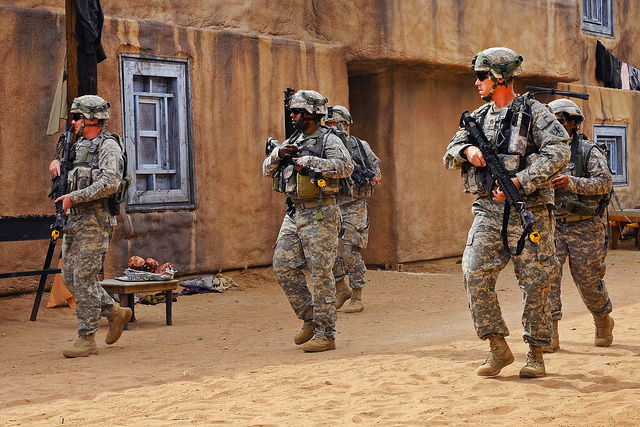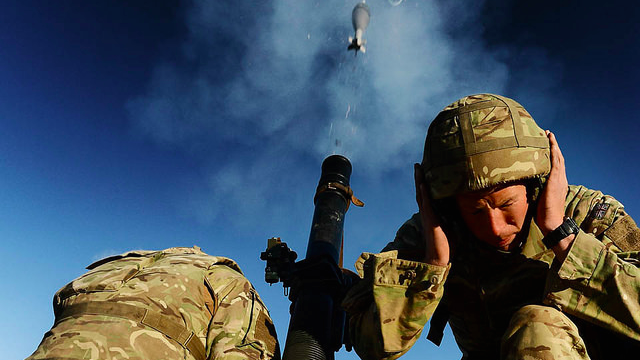The sensory chaos of battle has always posed a challenge to armies hoping to prepare for — and recover from — war. And while it’s clear to most people how sight and sound factor into a soldier’s experience and memory of battle, the smells of combat were, for most of history, largely ignored.
But by the eve of the 20th Century, scientists had finally begun to study olfaction in earnest — an uptick in scientific interest that coincided with the military’s long-awaited acknowledgement of post-traumatic stress disorder (PTSD) in its ranks.
Instead of giving up on soldiers whose PTSD symptoms wouldn’t relent, the US military began funding research into the causes behind PTSD, and therapies that might provide relief. Luckily, some of this money ended up in the hands of smell scientists like Pamela Dalton.
Dalton, a cognitive psychologist, first came to appreciate the power of smell in memory formation as a graduate student, when she used olfactory cues to enhance her human subjects’ memories of unfamiliar faces. She’s now a faculty member at the Monell Chemical Senses Center in Philadelphia, and one of the nation’s experts on the relationship between smell and memory, and, in particular, smell and PTSD.
After the Gulf War, Dalton and her colleagues received funding from the US military to study how smells were becoming associated with traumatic memories. “There’s been a lot of interest in understanding the maintenance of trauma in veterans returning from deployment,” she told io9. “In many of these cases, there was an initial, unfamiliar context with lots of strange odours, along with a very stressful situation.”
For patients and researchers, recognising how smell might be linked to traumatic memories represented a big first step towards finding proper treatments. “When you find yourself walking down the street, and all of a sudden your heart’s pounding at 200 bpm, and your palms are sweaty, and you find yourself wanting to run and you don’t know why,” it’s critical to gain an understanding of what’s setting off your body’s alarms, Dalton said.
Anatomists knew that areas of the brain dedicated to smell, namely the olfactory bulb, were directly connected to the amygdala, a brain region implicated in emotions like fear, and the hippocampus, the brain’s memory center. What was less clear was whether these neural connections played a hand in the development of PTSD.
Dalton’s first experiments were devoted to investigating whether odours could help sear a negative memory into a test subject’s mind. It soon became clear that a strong odorant could transform the blandest of experiences into a lasting memory. Recognising the implications that such a finding might have for understanding and treating PTSD, Dalton began to study whether one could prevent certain smells from enhancing memories in the first place.
“Our goal was to test whether you could pre-expose or inoculate people with these odours, and subsequently prevent the negative memory from taking,” she recounted. “That’s exactly what we showed. You could take an odor that was initially unfamiliar, expose an individual to it in a neutral context, and then when you paired that same odor with a negative experience, it no longer had a strong associative power.”

“Soldiers patrol through a village during a situation training exercise at Kamal Jabour, a mock Afghan village located on a training facility on Fort Bliss, Texas, April 26, 2012.” Staff Sgt Joseph Wilbanks, US Army. CC BY 2.0.
Prior to Dalton’s findings, the military trained soldiers in mock villages that were accurate recreations of what soldiers might encounter in Afghanistan or Iraq, but only to a point: these mockups failed to mimic the olfactory environment of the Middle East. “They covered everything with visual cues, and sometimes there was smoke,” said Dalton. “But bodies rotting in the sun for days at a time? Food-smells of a very foreign culture? Those were the things that were likely to be present at the time soldiers were experiencing these extreme stressors, and those were the things that were becoming tightly bound to the negative emotional state and persisting well beyond the original experience.”
Adding the mixed stenches of sewage, burning garbage, and local spices might not seem like the most crucial component of building a mock Iraqi village, but the science behind pre-exposure prevention of PTSD was strong. The military and VA took the hint. “I know they are [now] actually doing training with realistic olfactory environments,” Dalton said.
Familiarising the armed forces with the smells of war not only helps mitigate soldiers’ future memories of traumatic events, it also prepares newly deployed soldiers for the smells of a novel environment that might otherwise distract them from their duties. In 2006, the Army and the Marines began training some of their troops with virtual-reality devices that included high-tech collars designed to emit noisome odours like melting plastic, or rotting flesh, prior to deployment.
But what about members of the armed forces who return home associating a specific smell with a terrible memory — like the first patient in this case study, a Vietnam vet for whom diesel fuel triggers a memory of witnessing the deaths of a dozen of his fellow soldiers? For patients like these, Dalton has investigated how methodical re-exposure to a triggering odor in a comforting environment — a common approach to treating PTSD in general — can be used to help extinguish traumatic, smell-associated memories. “There are therapists who are working with some of the odours of warfare in those contexts, to desensitize PTSD veterans post-deployment,” she told me.

Captain Heather Bautista, a social worker at the David Grant USAF Medical Center at Travis AFB, California, demos a virtual reality system designed to help re-expose veterans to the sources of their traumatic memories, using audio, video, a motion-inducing platform, and odours. This software is now available at numerous Air Force bases. diesel, cordite, body odor, garbage, and burning rubber” during exposure therapy for veterans with PTSD, it remains difficult for scientists and psychiatrists to develop good delivery methods for various odours, let alone identify the most-accurate odor mixtures. Thankfully, this hasn’t stopped them from trying. Scientists have used scent therapy to help erase memories in sleeping humans, and virtual reality companies have teamed up with fragrance manufacturers to improve their immersive training and re-exposure systems for the military.
There’s plenty of mystery left with the science of olfaction and memory (scientists continue to bicker over the number of detectable, unique smells that are actually out there), but smell will always be close to our hearts. And with respect to our veterans, beyond all the dodging of bullets and mapping of exit strategies, let’s hope the military continues to respect the smell of war as an element of battle that should never be ignored.
